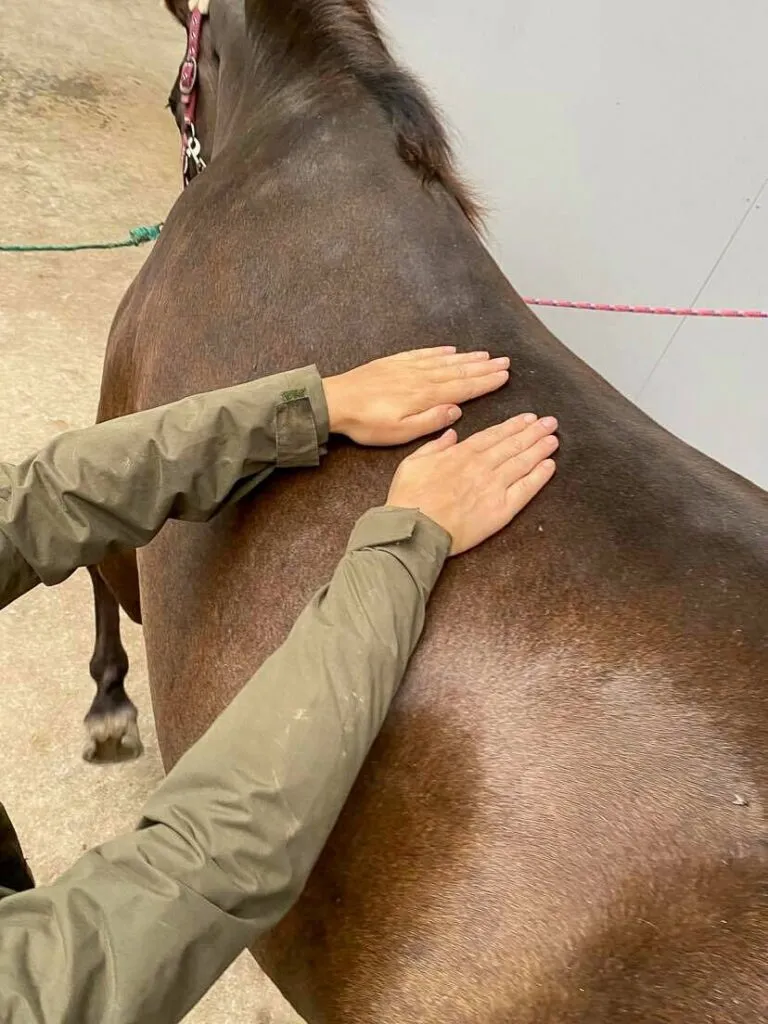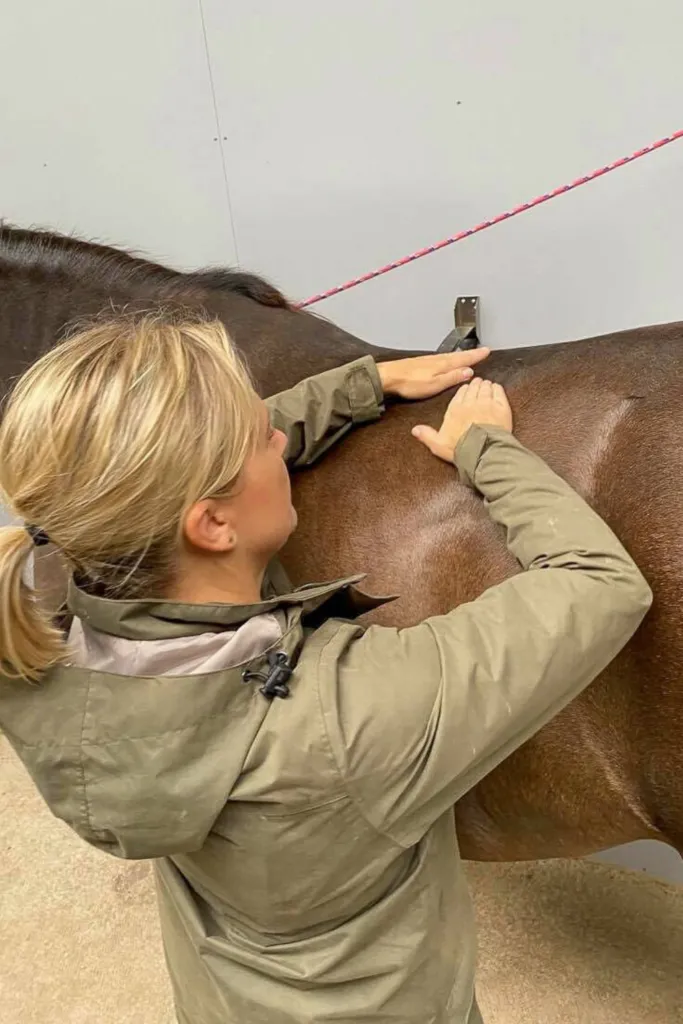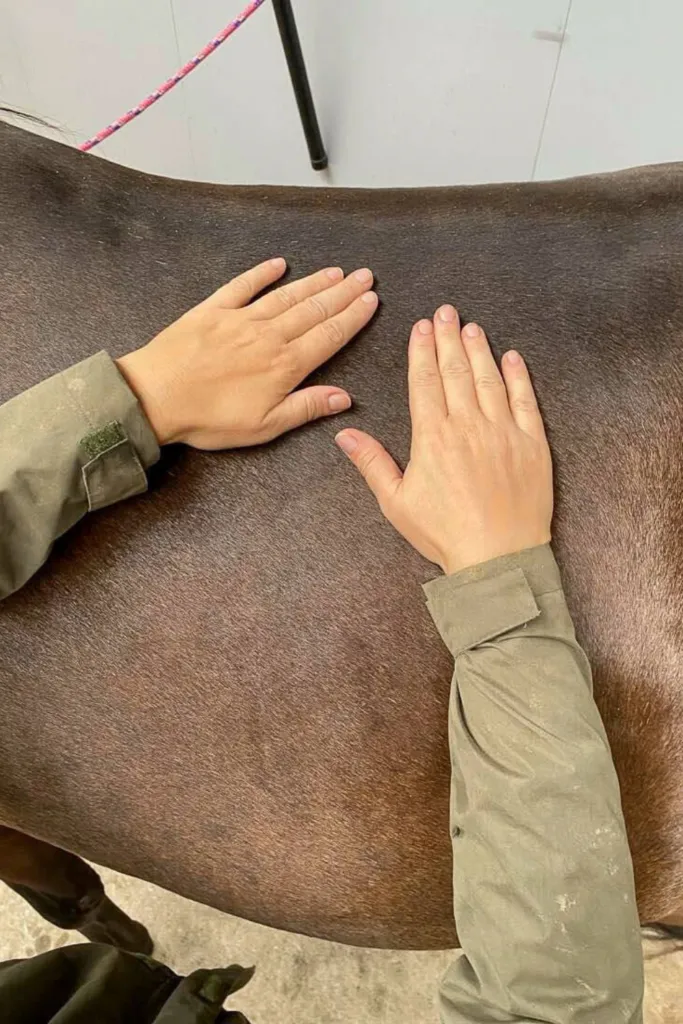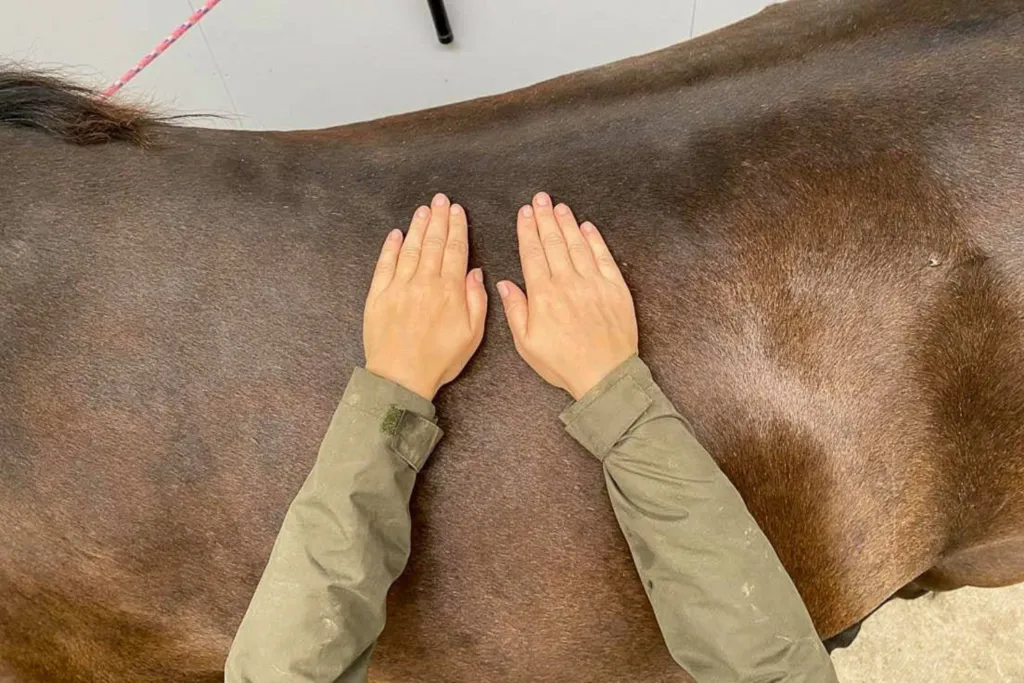Menu

If you get into the routine of massaging your horse regularly, it won't be long before you experience the benefits. Indeed, massaging provides a closer physical and mental bond with your horse. At the same time, it's an ideal opportunity to detect any challenging areas in your horse's body. The latter allows you to prevent tense areas before they develop and can lead to completely different problems in the form of injuries or overloading.
Read also: Is it time for the saddler? Check if your saddle fits your horse
Muscle tension is often the reason why horses perform poorly. Studies show that tension in 5% of the muscle will bother the horse, while tension in 30% of the muscle will cause the horse to compensate. This often results in the horse developing tension in entirely different areas of the body.

Muscle tension can also be an early warning sign of an injury. By feeling your horse, for instance during a massage, you can gain unique insight into possible challenges lurking beneath the surface. And massage can indeed help to prevent injuries by keeping the soft tissue mobile.
Equine massage is generally good for:
• Warming up before work
• Cooling down after work (wait until the pulse is down and any sweat has subsided)
• Preventative – up to 2-3 times a week
• Relaxation in connection with injuries
• General relaxation or balancing of the horse
• Increases and improves blood circulation
• Increases lymph circulation
• Raises body heat
• Lowers blood pressure (through the influence of the autonomic nervous system)
• Increases elasticity in muscles and tendons
• Prevents various problems in the entire musculoskeletal system
Massage is something everyone can learn. There are a few things you can do before you start massaging your horse to get the most out of it.
Take a deep breath and release all tension through your breathing. Horses make use of this, and your horse can perceive you doing this as a sign that something good is coming.
Make sure your feet are firmly planted on the ground and you are relaxed.
Stand next to your horse and look at it. Speak quietly to it and let it know that you are about to do something enjoyable together.
This technique is a kind of warm-up technique. It is not pleasant to have a massage on cold muscles, and this technique is about getting the soft tissue ready for the actual massage. This is done by making gentle strokes over the fur until it is the same temperature as your body temperature. This usually takes a few minutes for each area.

The technique is based on cross-direction work in a specific muscle with the aim of making the muscle more flexible and yielding. It is especially good for the superficial muscles, but can also have a beneficial effect on the deeper soft tissue. With this technique, you massage across the fibres, so it is good to know the direction of the fibres to get the most optimal result.
Read also: Does your horse have an irritated skin?

If you have worked across the fibres using friction massage, it is good to finish by working in the direction of the fibres again. The aim is to help the muscle get rid of the waste products you have loosened with the friction massage. The technique involves stretching the muscle fibres. This is done by running your fingers along the fibres the entire length of the muscle. Repeat this 15-20 times on the muscle before moving on to the next one.

There is a wealth of books and videos with useful knowledge and tutorials on equine massage. Massage courses and training are also offered in several places across the country if you want to delve further into the subject and perhaps even train in equine massage.
Examples of education institutions:
Centre for Animal Therapy
MySir
Axelsons Animal Massage School
Examples of books on equine massage:
Bettina Hvidemose: Equine Massage
Jean-Pierre Hourdebaigt: Equine Massage - A Practical Guide
Massage is generally beneficial for many things. However, there are certain situations where you should avoid giving your horse a massage:
During fever or infection
During acute inflammation
Directly on swellings, fibre tears, etc.
Before competitions or other performance, if the horse is not used to getting a massage
The Horse, Hands On and Happy (Massage)
Bettina Hvidemose, Equine Massage: A practical guide to using massage and stretching for relaxation of your own horse.